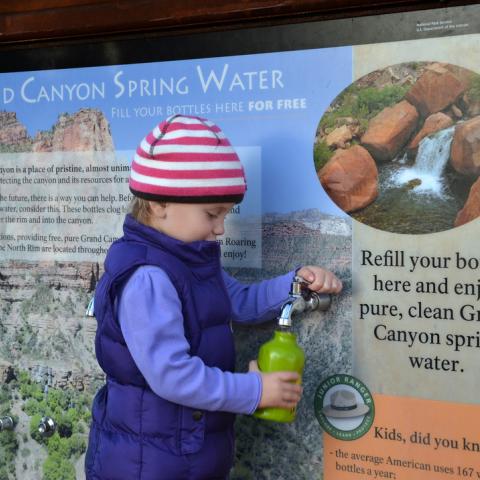
A red outline around the sandbar includes water on both sides. An inset map of the Colorado River with red box identifying closure area. Glen Canyon Dam is northeast of the closure, Lees Ferry is to the southwest/NPS
The National Park Service will use a natural compound that is toxic to fish in an effort to remove non-native smallmouth bass and green sunfish from the Colorado River below the Glen Canyon Dam in Glen Canyon National Recreation Area.
These non-native predatory fish were recently discovered breeding in areas where they have not previously been found in large numbers, threatening the recovery of humpback chub, which is listed as threatened under the Endangered Species Act, a release from Glen Canyon National Recreation Area said. The humpback chub was downlisted from endangered to threatened in October 2021, in part based upon the success of the species in the Colorado River through Grand Canyon. Because smallmouth bass are aggressive predators, failure to quickly control their population in the Colorado River above the Grand Canyon could likely lead to the demise of the humpback chub, the release added.
Beginning on September 17, crews will release the EPA-approved fish piscicide rotenone (CFT legumine) to kill these invasive, predatory fish. The first treatment is planned between September 17 and 18, potentially followed by a second treatment within two months to address fish that may have hatched or remain hidden in dense vegetation after the first treatment. The cobble bar area surrounding the backwater slough at river mile -12 where the invasive fish were found, the slough itself, and a short distance up and downstream will remain closed to the public for the duration of both treatments. The closure will be marked by signs. The river itself will not be closed.
The treatment will be carefully planned and conducted to minimize exposure to rotenone and protect the health and safety of humans, the environment, desirable fish species, and livestock. Prior to the treatment, tests will be conducted to determine the minimum effective concentration of rotenone for use during the treatment. Rotenone is a natural substance derived from plant roots. It has been effective at eliminating localized populations of smallmouth bass, including in the Colorado River Basin. An impermeable fabric barrier will be installed at the mouth of the slough for the duration of the treatments to minimize the exchange of water with the river.
Potassium permanganate, a chemical used to purify drinking water, will be added to the slough, and into the river just above the fabric barrier to neutralize the rotenone. Should any rotenone enter the main channel, it will immediately be diluted to concentrations that are insignificant to wildlife or humans, due to the volume of flow in the Colorado River, which will be held at approximately 8,000 cubic feet per second by the Bureau of Reclamation for three days during the treatments.
Lake Powell water elevations dropped to historically low levels this past March and April and are having indirect adverse impacts on the federally listed and native populations of fish below Glen Canyon Dam. Smallmouth bass and green sunfish live in the warmer levels of the lake’s waters closer to the surface. As that warmer water reaches the dam’s water intakes, the nonnative predatory fish have a greater chance of passing through the dam alive. This increases the threats to the native fish in the Grand Canyon and Glen Canyon’s rainbow trout fishery downstream of Glen Canyon Dam.
Threats to native fish are increasing due to the warmer temperatures of water passing through the dam and related increased river temperatures below the dam, which increase non-native fish spawning and reproduction, and allow for predation on native fish populations downriver. Juvenile smallmouth bass were found in the Colorado River below Glen Canyon Dam on July 1, underscoring the urgency of this emergent issue.




 Support Essential Coverage of Essential Places
Support Essential Coverage of Essential Places







Add comment